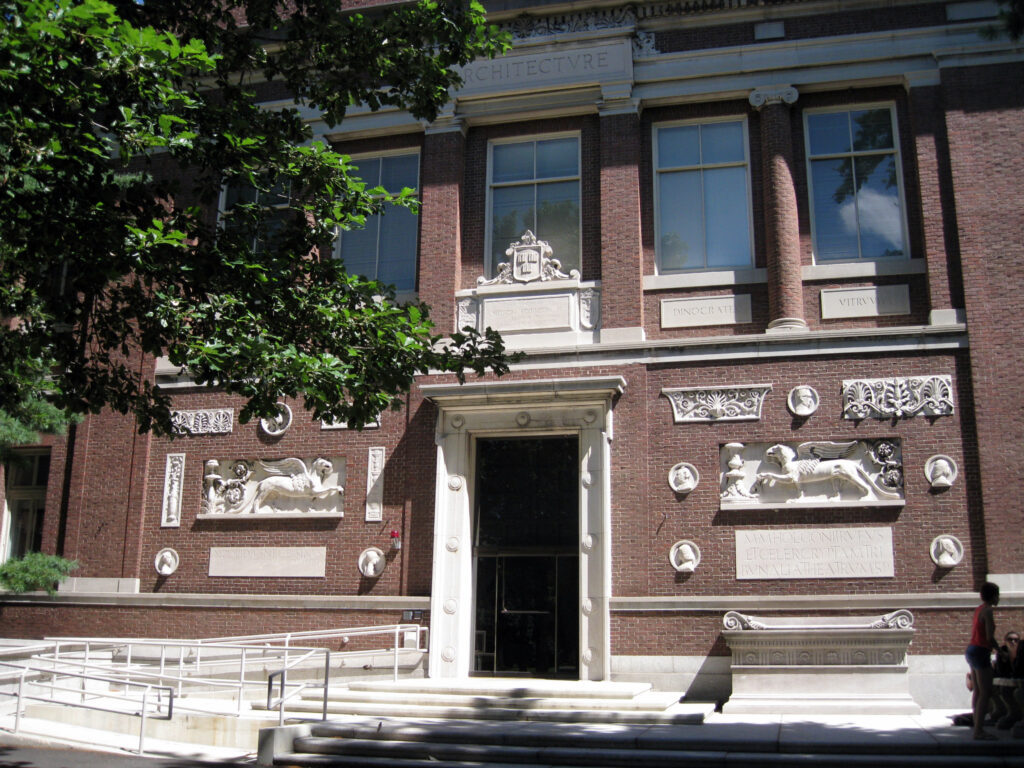One American university just offered a suggestion that its undergraduate experience may be online this fall.
 Harvard College professor and Dean of Undergraduate Education Amanda Claybaugh emailed her faculty to share her thinking and plans for the rest of 2020. It’s a fascinating short document, and one I’d like to discuss here.
Harvard College professor and Dean of Undergraduate Education Amanda Claybaugh emailed her faculty to share her thinking and plans for the rest of 2020. It’s a fascinating short document, and one I’d like to discuss here.
The dean leads with a crucial point: “it seems likely that, under any scenario, most of our instruction will be online.”
This is different from most other recent pronouncements from campus leaders. Claybaugh isn’t calling for an entirely online term – note that “most.” She’s certainly not anticipating a wholly or mostly in-person experience. And she isn’t calling for either a balanced blend of online and in-person, nor a HyFlex experience.
What is the dean’s rationale?
because of the impediments our international students will face returning to campus, because of the risks our immunocompromised students and faculty will face returning to the classroom, and because of the difficulty of holding in-person classes while still conforming to guidance from public health authorities.
All of which makes a great deal of sense. International students: that’s about 1/5th of the student body. Immunocompromised members of the community: ditto. Having classes in person without spreading COVID: the same.
How will Harvard accomplish this? Claybaugh outlines three support strategies.
First, changing up the instructor/student ratio: “Sections will be capped at twelve students, and graduate students will be trained to provide additional support for online teaching.”
Second, expanded faculty development:
All faculty are expected to attend trainings this summer… Consisting of four one-hour live sessions, along with materials to review in advance, these trainings will offer concrete guidance on adapting courses to remote teaching. Faculty will finish them with a redesigned syllabus and Canvas site.
Note that attendance at these trainings isn’t optional, but “expected.”
Third, “[p]roviding support for course redesign…” Instructors “can consult with staff at the Bok Center, and they can also hire graduate students to work on this over the summer.”
There is also a technological note:
We will continue to use Canvas, Zoom, and Panopto, but we recognize that certain courses (language courses, lab courses, course that rely heavily on the blackboard) might have additional needs. We’ll be working with chairs to determine what other technologies we should invest in.
That’s a curiously limited set of just three technologies. Apparently supporting the huge range of other tools is the province of individual departments. I note the emphasis on blackboard (whiteboard?) needs.

Why does all of this matter? Harvard is, after all, just one out of 4400 or so American higher education institutions. It is literally extraordinary due to its superlative reputation, wealth, and network.
Yet much of American higher ed, and a great deal of the discourse around it, pays inordinate attention to Harvard. That university’s every curricular twitch, its program decisions, statements from its faculty are magnetic to academia. So, first off, statements like Claybaugh’s are likely to be more influential than those from a given state university.
Second, the dean’s points may actually be applicable to other institutions. Think of this line again, about why Harvard might be mostly online: “the difficulty of holding in-person classes while still conforming to guidance from public health authorities.” If Harvard finds this challenging, with about $5.5 billion in income and its $40 billion endowment, what does that say about the remaining 99.9+% of American higher education?
I don’t want to freight this one email with too much meaning. It is, after all, just one message. WBUR points out (without linking, alas) that a parallel communication with a different call is in play:
Another email circulating among some faculty says should the college allow undergraduates back to campus, the current plan would have them take their classes over Zoom from their dorm rooms since there are not enough larger classrooms to provide sufficient social distancing..
That’s closer to what I’ve heard from other campuses. Claybaugh’s email offers a different take. I wonder how many colleges and universities will be inspired or nudged towards holding a mostly or entirely online fall term because of it. Perhaps this is the starting gun for a race.
(photos by new-york-city and Little Koshka; link via WBUR)





It seems silly not to effectuate a most straightforward plan: allow/induce undergraduates to choose a six-year “college experience”. that would reduce the density of every activity by a factor of 1.5. Tuition would be the same as 4 year tuition.
The “off years” would be devoted to public service & internships.
That’s an interesting idea, John. Would the entire first-year class meet in person?
Education reform is impossible unless we get rid of the ideas of age-segregated grades/years and degrees. The ideal system for higher ed would be one of occasional, judicious. purpose-driven lifelong use with the goal being knowledge. Credentialing needs to be completely removed from the equation and handled by third parties.
The current system of a blowout four year experience on a leafy campus, while being completely removed from the job world and life experience was a questionable idea and expensive proposition from the word go.
“Education reform is impossible unless we get rid of the ideas of age-segregated grades/years and degrees. The ideal system for higher ed would be one of occasional, judicious. purpose-driven lifelong use with the goal being knowledge.”
I’m reading these very same suggestions in “The Sheepskin Psychosis” from 1965!
Just read the NY Times review of that book. The Times allows a rightful critic of the higher ed industrial complex to be shouted down by a professor bought and paid for by said complex. Some things never change!
Ironic that it takes a pandemic to have higher ed leverage the opportunities in digital transformation. Will a reduction in tuitions follow?
That I leave to the logistics experts. But a staggered start for new students could work. With the alternating cohorts re-shuffled several times if you will so they can all meet each other. In fact if incoming students could meet in smaller cohorts that light produce closer relationships & fewer cliques.
For college towns that depend on the student population to survive, another online semester or year will be devastating. Hundreds of businesses will fail, with thousands more jobs lost.
Agreed. Even FSU is refusing to release how many football players have tested positive, along with other schools. How many parents will sent their children off to school with infected players? How many staff and instructors would teach students that are infected? How many administrators? How many students would risk infection? Not many.
It’s the stigma that they are afraid of. STIGMA of INFECTION.
Time to check the life jackets and life boats on the Titanic.
https://apicciano.commons.gc.cuny.edu/2020/04/17/captain-trump-of-the-rms-titanic/
Naomi is one of the handful of people recognizing the devastating impact on the surrounding towns of college closures. In this flurry of virus-related media pieces, I’ve seen exactly one article address that. An online or even hybrid model would devastate a town like Big Rapids where I grew up. It needs robust Ferris State enrollments to survive.
Glen, you’re also right about fear of infection being a big factor.